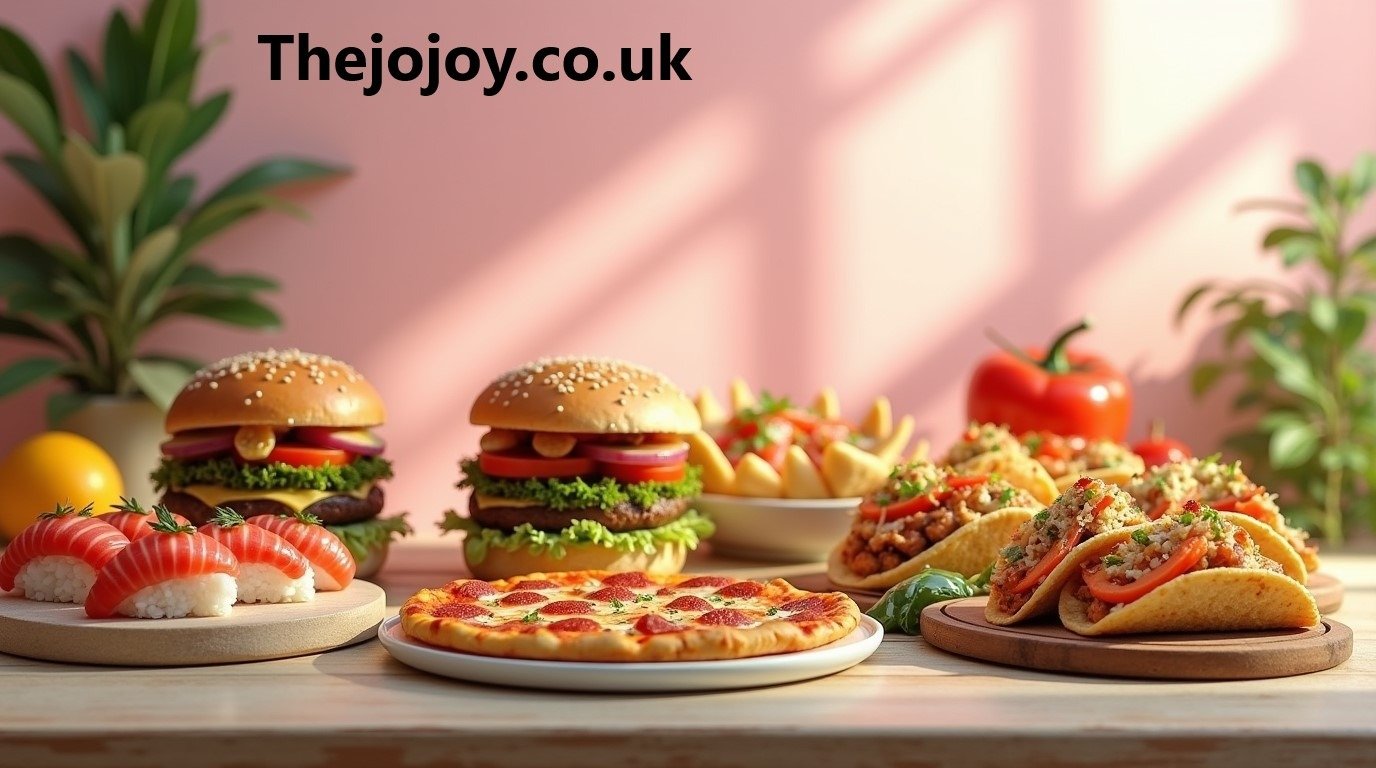Introduction to Trending Food Fhthopefood
In 2025, the food industry is undergoing a transformation driven by evolving consumer preferences focused on health, sustainability, and convenience. “Trending food fhthopefood,” as a conceptual keyword, encapsulates cutting-edge trends that combine plant-based innovation, organic snacking, functional foods, and the rise of sustainable practices such as compostable packaging and innovative product delivery. This movement highlights the fusion of traditional cooking methods with new-age dietary preferences and technological advancements in culinary arts, reflecting a broader cultural and environmental consciousness worldwide.
The popularity of fhthopefood trends is underscored by data indicating surging demand for plant-based proteins, superfood powders, organic snack bundles, and globally inspired, visually appealing recipes prominently featured on platforms like TikTok. Consumers in 2025 are not just looking for tasty meals but seek authenticity, nutritional density, and social impact in their food choices—a hallmark of fhthopefood’s philosophy.
Health and Wellness Drive Food Trends
A critical aspect of trending food fhthopefood is the increasing emphasis on health and wellness. Consumers demonstrate strong interest in foods that provide functional benefits beyond basic nutrition, including gut health, mental clarity, immunity boosting, and energy enhancement. Plant-based protein powders, vegan superfood blends, and fermented foods like kimchi are prime examples of this trend.
Health-conscious individuals prioritize foods with clean labels, organic certification, and minimal processing, driving demand for convenient ready-to-eat healthy options and organic snack bundles with functional ingredients. Despite this trend, some categories like ceremonial-grade matcha tea have seen declining interest due to price sensitivity and evolving consumer tastes, prompting food brands to explore innovative product bundles and competitive pricing strategies.
Plant-Based Proteins and Functional Foods
Amidst the 2025 trends under fhthopefood, plant-based protein powders and bars are dominating. Search interest and sales of vegan proteins surged significantly between 2024 and 2025, reflecting a societal shift towards plant-centric diets with environmental and ethical motivations. However, texture and flavor remain crucial product development challenges, emphasizing the need for innovations like texture-enhanced powders and creative flavor profiles (e.g., berry, chocolate) to attract broader markets.
In parallel, functional foods with targeted health benefits—such as superfood powders, fermented foods, and gut-friendly probiotics—continue gaining traction. These products fit well with fhthopefood’s ethos, blending health benefits with convenience and global flavor influences to meet the demands of the modern consumer.
Sustainability: Packaging and Food Waste Solutions
Sustainability is a foundational pillar underlying trending food fhthopefood strategies. Consumers, particularly Gen Z, show a willingness to pay more for products demonstrating genuine environmental stewardship. Compostable food packaging is gaining rapid adoption, aligning with consumer efforts to reduce plastic waste and environmental footprint. Food brands and fhthopefood advocates prioritize packaging innovations that are fully compostable and home-degradable to capture this growing market segment.
Additionally, food waste minimization and responsible sourcing are integral to fhthopefood trends. These include optimizing ingredient sourcing, leveraging regenerative agriculture, and converting cooking by-products like used cooking oil into biofuels, exemplified by partnerships such as FatHopes Energy turning used oil into sustainable aviation fuel.
Global and Fusion Flavors Captivating Consumers
The fhthopefood trend embraces global palate exploration, offering consumers diverse and culturally authentic flavors through fusion snacks, flame-cooked foods, and international recipes. Michelin-recognized restaurants and social media trendsetters propel flavors like Thai chili, Mexican cactus, and fermented ingredients to the forefront. TikTok visual recipes for mushrooms, seaweed snacks, and other superfoods capture attention and influence buying decisions.
This global inspiration resonates with consumers who seek culturally rich, authentic, and adventurous food experiences, expanding the scope of fhthopefood beyond just health to also encompass enjoyment and discovery.
Convenience and Online Food Delivery Boosts
The rise of online food delivery platforms and meal kit services plays a transformative role in trending food fhthopefood. E-commerce sales in the food sector are projected to reach trillions, with meal kits combining health-conscious ingredients and quick preparation gaining popularity among busy consumers. Delivery services such as DoorDash capitalize on this shift, enabling brands to reach wider audiences while enabling consumers to access fresh, functional, and organic meals conveniently at home.
The convenience factor also extends to ready-to-eat protein bars and healthy snacks packaged for on-the-go consumption, appealing to younger, health-focused demographics that integrate food into their busy lifestyles seamlessly.
Emerging Food Tech and Futuristic Foods
Fhthopefood trends incorporate new food technologies including AI-driven personalized nutrition, regenerative agriculture, and novel cooking methods such as open flame and smoke infusion. These technologies optimize flavor profiles, nutritional content, and environmental impact, ensuring that food innovation aligns with consumer ethics and preferences. Innovations in plant-based seafood alternatives and mushroom-root products highlight the sector’s creativity and responsiveness to sustainability goals.
This forward-looking approach blends tradition and futurism, reflecting fhthopefood’s role in shaping the future culinary landscape.
FAQs
Q1: What is trending food fhthopefood?
A1: Trending food fhthopefood represents the latest 2025 food trends emphasizing plant-based diets, organic snacks, functional ingredients, sustainability in packaging, global flavors, and convenience, integrating traditional and innovative cooking styles.
Q2: Why is plant-based protein popular in the fhthopefood trend?
A2: Plant-based protein addresses health, ethical, and environmental concerns, with rising consumer interest leading to product innovation in texture and flavors, making it a pillar of the fhthopefood movement.
Q3: How does sustainability influence fhthopefood?
A3: Sustainability shapes product packaging choices (compostable materials), sourcing practices (regenerative farming), and waste management (recycling used cooking oil), aligning food trends with ecological responsibility.
Q4: Which global flavors are trending in fhthopefood?
A4: Fusion snacks featuring Thai chili, Mexican cactus, seaweed, and fermented foods are popular, driven by social media influencers and culinary experts focusing on authentic, sensory-rich eating experiences.
Q5: How important is convenience in trending food fhthopefood?
A5: Convenience, through online food delivery, meal kits, and ready-to-eat snacks, complements health and sustainability goals, catering to fast-paced lifestyles while maintaining quality and nutrition.
Conclusion
The trending food fhthopefood of 2025 represents a remarkable convergence of health, sustainability, convenience, and global culinary exploration. Driven by growing consumer awareness and shifting preferences, this trend embraces plant-based innovations, functional and organic foods, and eco-friendly packaging solutions that prioritize wellbeing and environmental responsibility. Convenience through online delivery and ready-to-eat formats ensures these foods fit modern, fast-paced lifestyles, while vibrant global flavors and fusion recipes add excitement and cultural richness to everyday eating.
As the food industry continues to evolve, embracing technology and innovative sourcing methods, fhthopefood leads the way in creating a future where taste, nutrition, and sustainability coexist harmoniously. This trend not only reflects changing dietary habits but also a broader movement towards mindful consumption and ethical food production, making 2025 a pivotal year in the transformation of how people choose and enjoy their meals. Staying attuned to these trends will be essential for anyone engaged in food production, marketing, or culinary arts to remain relevant and impactful in this dynamic landscape.



